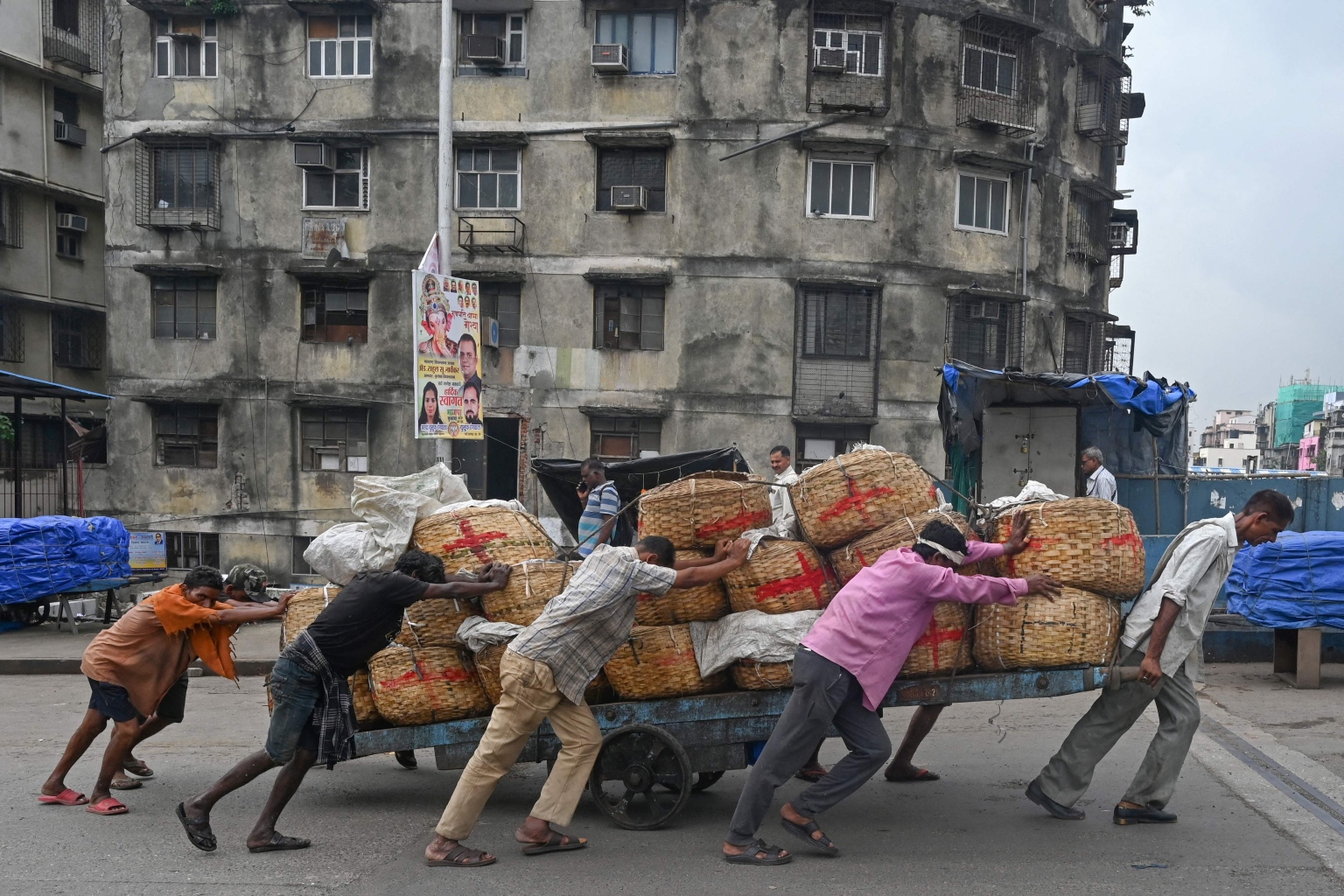Jump in exports to US keeps India in race to become next China
Sign up now: Get ST's newsletters delivered to your inbox

India gained a clear lead as buyers diversify supply sources in the face of rising labour costs.
PHOTO: AFP
Follow topic:
NEW DELHI - India, believed by many to have the potential to become the next China, is finally making headway in the exports market as it has become one of the top five suppliers of Christmas decorative items and T-shirts to the United States.
Seaborne shipments of festival goods and accessories to America touched US$20 million (S$28 million) last month, almost triple the value from the year-ago period, according to US Customs data. In the process, India gained a clear lead over the Philippines as buyers diversified supply sources in the face of rising labour costs and disruptions from China's strict Covid-19-zero policy.
One such beneficiary of the early Christmas present is Mr Amit Malhotra, whose Asian Handicrafts brand supplies decoration items to global brands such as Walt Disney, Harrods, Target and Dillard's. He confirmed a 20 per cent jump in orders compared with a year ago, and that he has bumped up production capacity.
"This year, we have shipped over 3.2 million units of Christmas decoration, up from 2.5 million last year," said Mr Malhotra, director at Asian Handicrafts.
"Though China exports a significant share of Christmas decoration items, many first-time buyers have been approaching us now," he said.
The trend is not limited to Christmas goods. Exporters in Asia's third-largest economy have been witnessing a significant increase in orders from both the US and Europe, with the shift mostly seen in low-cost, labour-intensive sectors such as apparel, handicrafts and non-electronic consumer goods.
While diversification of supply chains began with the US-China trade war in 2018, India had not seen any meaningful gains back then as countries such as Vietnam cornered the bulk of orders that were moving away from Beijing.
The Covid-19 pandemic, which saw China adopt strict lockdowns, is helping change that. India's goods exports, which reached US$420 billion in the fiscal year ended March, have already hit close to half that level in the five months beginning April. While that pales in comparison to China's annual US$3.36 trillion of exports, analysts view it as a good starting point.
Indian government data showed that Christmas decoration exports in the year ended March increased more than 54 per cent from fiscal year 2020 levels, while handicraft exports witnessed a jump of around 32 per cent during the same period.
China's continued decoupling from the global economy, along with post-pandemic recovery, presents an opportunity for India to accelerate its investment in longer-term competitiveness and prioritise "winnable" sectors, said Mr Siddharth Jain, a partner in the operations and performance practice at management consulting firm Kearney.
By 2030, India is projected to have the world's most abundant labour force, and could contribute more than US$500 billion annually to the global economy, according to a report by Kearney and the World Economic Forum.
"We have started to see green shoots of this with India's exports in fiscal year 2022 reaching around US$420 billion, far higher than earlier years," Mr Jain said. "This was driven by a combination of external as well as internal factors."
Medium-sized and large export firms saw a jump of 30 per cent to 40 per cent in their order books in the last fiscal year and the upswing would be more visible in the current financial year ending March 2023, said Mr Gautam Nair, managing director of Matrix Clothing, a medium-sized garment export firm.
The firm, which exports apparels to global brands including Superdry, Ralph Lauren and Timberland, has seen orders climb by 45 per cent in the last fiscal year compared with the pre-Covid-19 year.
Still, there are hurdles to the growth of low-value-added manufacturing in the form of non-labour costs, warn analysts.
Ms Priyanka Kishore, an economist at Oxford Economics, said that "the bigger problems" include the legacy issues of contract enforcements and tax transparency.
"These do pose a challenge to India's manufacturing ambitions and need to be addressed for the country to fully tap its potential as a manufacturing hub," she added. BLOOMBERG

